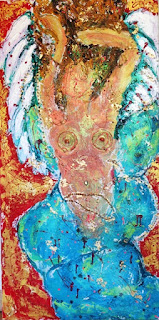The
wand is the quintessential mythical tool of magic. No magical fantasy character
is without one. Wands make things happen and make nifty weapons, don’t they?
Perhaps because, in real magic, the wand is a symbol of the magician’s will and
acts as a symbolic tool of concentration and direction of energy.
The wand is associated with
space, mind, healing, communication, and the element of fire. In its fiery
aspect, it represents the male and solar regenerative power—a phallic, fertile
symbol.
The celebrated early 20th
century mage Aleister Crowley referred to the wand as a symbol of the magician’s
oath. What was the oath but commitment to attaining “True Will.” True Will was Crowley’s
term for spiritual liberation and enlightenment. Crowley says in his book Liber IV:
“The
Magick Wand is thus the principal weapon of the Magus; and the ‘name’ of that
wand is the Magical Oath.”
The
wand is a symbol of the magical worker’s power to act. It is a symbol of the
magician himself. As the 16th century mage Giordano Bruno said in De
Magia:
“[In
the highest sense] a magician is a wise man who knows how to act.”
In other words, a magician,
ideally, is a person who has gained self-mastery.
Well, that sounds kind of
egg-heady and a far cry from the swish-and-flick romance we love about the
magical wand. But maybe the explanation takes the strangeness—the scary foreignness—out
of the picture about what a “magical wand” really is. And maybe it makes it
okay for you to have one not only as a kitschy novelty item or children’s toy
but as a powerful symbol of spiritual goals and intentions.
Where did the idea of the magical wand
originate anyway? Learn more from this free, illustrated pdf booklet.
Learn about how real magic in history inspired myth and fantasy.
 |
| Sample from All About the Magical Wand |
 |
| Sample from All About the Magical Wand |
 |
| Sample from All About the Magical Wand |















